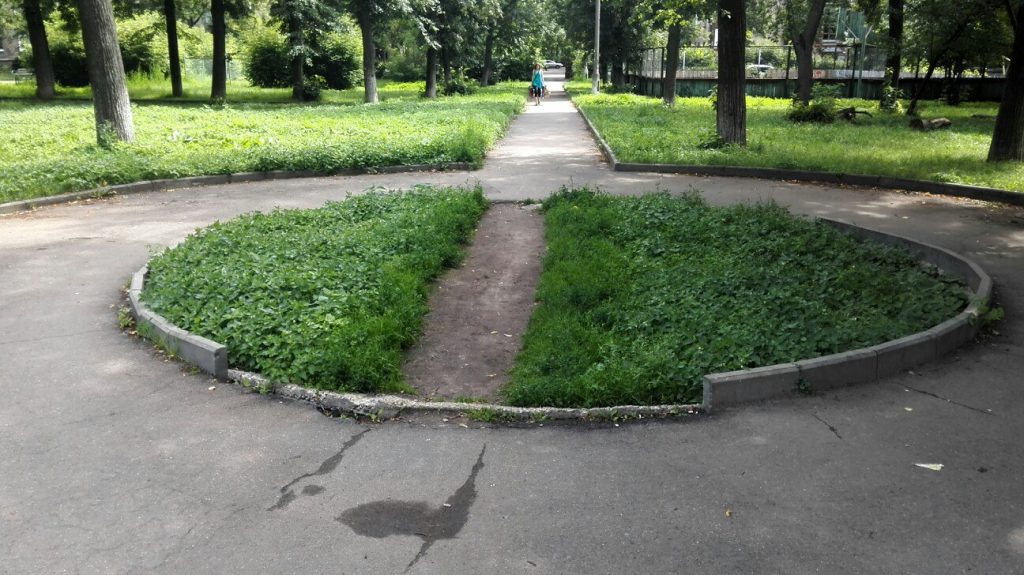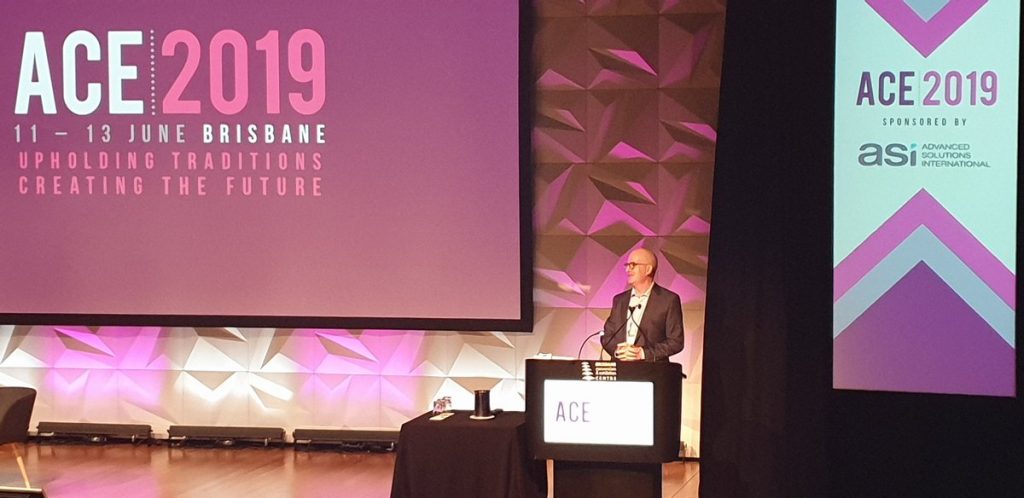
Top 10 Take-Aways from AuSAE’s ACE Conference
Another action packed Australasian Society for Association Executives (AuSAE) ACE Conference drew to a close in sunny Brisbane yesterday, living up to its promise to help members ‘uphold traditions and create the future’.
The hands-down highlight of ACE for me was the keynote speaker Gus Balbontin, who exploded on stage, delivering an energetic, inspiring key note packed with powerful insights and personal reflections on innovation, change and leadership that had the audience spellbound and set the tone for the whole conference. He was followed by a plethora of experts and association leaders offering practical advice and generously sharing their experiences.
The most moving moment of the Conference for me was hearing from the very humble Luigi Coco, President of the Queensland Strawberry Growers Association, who talked about the devasting impact of the ‘needles in strawberries‘ crisis on his members and the broader strawberry industry and the lessons they learned from managing this crisis. His three big tips: have a crisis management plan; find a crisis management expert you can call on at a moment’s notice; and don’t talk to the media until you have got your messaging agreed and consistent.
The most inspiring story came from GirlBoss NZ Founder, 20 year-old Alexia Hilbertidou, who is on a mission to close the gender gap in science, technology, maths, entrepreneurship and leadership. From a standing start, GirlBoss now has a 10,000+ strong membership of young women learning how to become leaders of the future with support from a broad range of corporate partners and the NZ government. Her purpose is clear and serves as a mobilising force for members: “2% of NZX CEO’s are women – we’re changing that!“. Amen to that sister!
My top 10 take-aways from #AUSAEACE
Here is a list of the top 10 things that I’ll take away from my time at ACE and endeavour to build into the FineHaus ethos:
1. Solve your members’ problems
As Gus Balbontin so eloquently explained, the number one job of any company is to understand its customers’ problems and solve them. If you don’t solve their problems, you can be confident that they will look for and find someone else who will and your value to them will be diminished – or worse still, like the cassette and cassette player, you will be completely replaced by a better solution.
It is also important to remember that not every member’s problems are the same. You need to understand how your members’ needs and expectations of your association vary – whether this is by generation, by gender, by type of member, by size, by sector.
Fundamentally, this then also means that your solutions or services do not have to be suitable for every type of member. Associations should be developing services or programs targeted at specific needs of your different member segments.
Of course, you may not be able to solve every problem for every member. Deciding which problems to solve, for what type of member are key strategic decisions for your association.
- Member experience research is a great place to start on this journey!
2. Rip up your own concrete
Many associations have entrenched processes, systems and procedures for getting things done – laying down in concrete ‘the way things are done around here‘.
Gus challenged us consider these from your members’ perspective and challenge the way you do things to ensure sure they represent the fastest and most effective way for members to get things done – ripping up your own concrete or redesigning the path where necessary.
The more established your association and the more your members (and board) sit at the conservative/risk-adverse end of the appetite for change spectrum, the harder it can be to rip up the concrete.
This was underlined in a conversation I had at the FineHaus + beaton booth with a systems analyst for an association that I won’t name, who was talking with great passion about his efforts to get the association to change its paper-based, highly manual join process and allow members to join online and the resistance he was encountering to doing this. Not being able to join online in 2019 is a symptom of an association in desperate need of ripping up their own concrete!
- Work with your team and members to identify what concrete needs to be ripped up at your association and then take action!
- Remember that you, your team and the board may have worked very hard to lay the concrete in the first place and encourage the focus to stay on improving member experience.
3. Think Digital-First
A lively panel session featuring Robert Barnes, Higher Logic and Dave Coriale from US-based, Delcor Solutions discussed digital transformation for the association sector and the challenges this brings for many associations.
The key take-away from this session for me was that when you are developing your new products and services to solve your members’ problems and ripping up your organisational concrete – design for the digital experience first.
Think about how easy it is for members and prospective members to join your new special interest group, to interact in your member online community or access your resources from a mobile phone? How hard it is for members to access and read your newsletter or thought leadership white paper from their mobile device? Can they watch your new event live online if they can’t attend in person? Can they view it on-demand afterwards?
- Take the online IT Maturity Assessment for Associations and Not For Profits to measure your Association’s readiness for digital transformation
- Recommended reading from this session: Tech Success for Associations: Balancing IT Maturity, Readiness, and Expectations for a Satisfying, Sustainable Future
4. Focus on being resourceful
Gus talked about the importance of being resourceful and fostering resourcefulness in your team, instead of bemoaning the lack of time/effort or money to get things done at association – and Alexia provided a case study on resourcefulness in action with her success in building GirlBoss.
We all need to dream up creative solutions to getting things done, to think outside of the box, to leverage the connections and draw on the passion in your member community to advance your purpose.
- How can you support resourcefulness at your association?
5. Embrace co-opetition & crowdsourcing
Solving your members’ problems isn’t something your association has to do all by itself.
Anthony Kuhlmann, CEO of Red Apple Consultancy, introduced delegates to the concept of co-opetition as a way of getting things done in a resource-constrained environment. For those who are wondering, co-opetition is “collaboration between business competitors, in the hope of mutually beneficial results.”
For associations, this might mean collaborating with other associations in your space to lobby on issues of mutual importance or sharing the development costs for new resources that could be utilised across associations or to lever their expertise (without having to do it yourself).
Bruce Muirhead from MindHive talked about how technology now connects us all and explained how associations could to “tap into the wisdom of the crowd” to source solutions to complex problems.
- What are the ways you could co-operate with other competing associations to solve problems that your members have?
- How could you leverage crowdsourcing at your association?
6. Don’t be arrogant and lazy
In an excellent re-interpretation of Aesop’s fable about the hare and the tortoise, Gus explained that that the real moral of the story is not be “slow and steady wins the race” but “don’t be arrogant and lazy like the rabbit“.
If everything is going well for your association, remember that you are only valuable to your members today. Don’t be content to rest on your laurels. He reminded delegates that every industry is changing and don’t think that this won’t happen to you. Survivors are the most adaptable.
- How can your association offer more value to your members?
- How might industry change impact your association? How can you adapt to this?
7. Harness Recommendations from “People Like Me”
Francesca Boase, Managing Director of Edelman Australia shared insights from the 2019 Edelman Trust Barometer, which revealed that “trust has changed profoundly in the past year — people have shifted their trust to the relationships within their control, most notably their employers.”
Perhaps not surprisingly, “people like me” is now the most trusted credible source of information when forming an opinion about a company, along with academic experts, then company technical experts. She also noted that trust in CEO’s and boards was declining.
For membership associations, word-of-mouth referral from other members (‘people like me’) has always been critical for membership acquisition efforts.
- Do you understand how likely your members are to recommend you – and what you need to do increase this likelihood?
- Think about how you can better leverage personal recommendation, testimonials and referrals for your membership acquisition and retention efforts.
8. Leading change is hard – leave your ego at the door!
Richard Yep, CEO of the American Counselling Association generously shared lesson he learned from his 30+ years as an association management professional and the challenges this entailed.
He recommended addressing the reluctance to innovate by understanding concerns (asking “and what else..” to ensure you get to the heart of the problem), re-framing the issue and thinking about how to make it a positive experience for everyone. It is the job of all association leaders to self-reflect on their willingness to embark on this journey. Are you getting in the way of the change needed to drive your association forward?
To this, we would also note that while board members maybe your customers, they are not necessarily representative of your member-base (given they are likely to be far more engaged and knowledgeable about your association than a typical member).
Richard encouraged delegates to think carefully about managing this challenge and to “leave your ego at the door” for board discussions.
- Support and facilitate a diversity of views.
- Bring to the table hard data on member views, expectations and experience with your association to inform board decision-making.
- Consider the biggest obstacles to change at your association and to reflect on whether you are one of those obstacles and part of the problem.
9. Look after yourself
Gus encouraged us to stay flexible in our thinking and challenged us to do something different or new every day to get out of the rut – even if this was taking a different route home each night.
Richard talked about the importance of managing burn-out and self-care for association professionals, who often work in challenging environments where there is always more that could be done and in a connected world where it can be hard to escape work.
Make sure you turn off from work at the end of the day. Look after yourself (and your team) by not checking or responding to emails at night or sending emails on the weekend, so they feel they should reply. Separate me-time from work-time. Take your annual leave and encourage your staff to take theirs. Use outside resources and consultants to bring in new skills and expertise to your association rather than doing it all yourself.
He explained that if you verbalise a commitment to someone, you are much more likely to follow-through! To this end:
- Make a commitment to doing something new each day
- Make a commitment to on what you will do to better look after yourself and your team.
10. The value of community
Finally, the ACE Conference was a living demonstration of the value of belonging to a supportive, engaged community, willing to connect and learn from each other and to share knowledge and experiences with the common purpose of becoming better. Better as people, better at our jobs, better as employers, better for our members, better for our industries and for the broader community.
Thanks to everyone involved in making this happen. I loved every minute of it.

